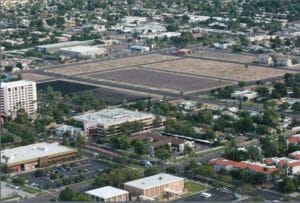Replacing a roof is a major investment for a homeowner. Taking that step is usually the last recourse when damage has become significant, age is advanced, or leakages have developed. Even then, sometimes property owners choose a more budget-friendly and convenient option by having an overlay instead of a roof “tear off.”
For roofers, tear-off involves removing the entire old structure with all new materials being constructed in its place. The overlay is when the existing roof stays as is with installing a new system directly over it. Avoiding the tear-off can save the client a great deal of time and money, or they feel this is the case.
The problem is that many layers can potentially create more issues further down the line than they do in protecting your property and ultimately cost more than if there was a tear-off from the start.
While the option is there to re-roof over an existing structure (asphalt materials), the recommendation is to avoid the alternative. Why should you go ahead and make the complete tear off and steer clear of a “re-roof?” Let’s look at a few reasons from the experts.

Why Should You Avoid A Re-Roof In Favor Of The Full Tear Off
A roof replacement is a costly endeavor that many homeowners hope to avoid during their time spent in a house. Sometimes it’s impossible to ignore when the structure has reached its age limit, the damage has advanced, or leakages have developed.
You can neglect these issues, but you’ll be taking a chance for roof failure putting the property at risk, not to mention the tremendous cost, more so than replacing a roof.
Still, some homeowners take a shortcut even then by choosing a roof overlay (only applicable with asphalt materials) instead of a tear-off, believing it to be a more convenient, budget-friendly, and effective option. But is it?
The roofing experts suggest that the overlay is not the most efficient use of a homeowner’s funds when adequate roof maintenance. Click for details on the differences between re-roofing and tear-off. Let’s review the reasons you should avoid putting shingles over shingles.
• The surfaces will be uneven
Asphalt shingles need to lay on an even, flat surface. If a roofer attempts to force new shingles on top of bumps and gap areas, the old inconsistencies will filter through to the new application creating difficulties with securing the layer. Those old defects will then translate to that top system.
Ultimately, the homeowner will start to see essentially the same sort of problems begin to arise with this new layer since mounting it correctly and sufficiently is a challenge.
• Inspecting the roofing structure to its core will be virtually impossible
Roofing contractors will be limited in their capacity to adequately inspect the existing structure to ensure there’s no deterioration of the plywood or potential cracks or holes in the wood that needs to be changed out to avoid the possibility of leaks.
If the repair contractor isn’t able to start from the foundation of the structure, there’s no way for them to know if the house has a good base before adding the overlay to the structure.
That can mean extensive costs down the road if you aren’t aware of damages. Issues with the foundation can lead to problems with the overall structural integrity and severe property consequences.
• The expense is greater at the end of the day
The addition of shingles on top of shingles is, in fact, more expensive at the end of the day compared to making a complete tear-off, according to the experts. You might see savings upfront that seems enticing when approached with the idea of doing a re-roof.
Still, the fact that you’ll be forced to do a replacement later due to the inadequate foundation will mean that you actually wasted time and expense on an ineffective solution.
It’s much more sustainable to remove the old shingles and have those that have been stripped replaced adequately with a new system on the existing foundation to last for many more years to come – if the foundation is in good condition. All roofs are replaced at some point in time.
It’s better to do it properly, add to your property value and generate a return on your investment than to cause yourself a headache, lose value in the house, and cost more money down the road.
• The weight strain is a significant consideration
Roofs are constructed to handle a designated weight limit. A small structure can’t withstand extra loads added to it. The strain of an overlay can create roof problems, particularly in regions where snow is prevalent.
Even with a median home, an entire second roof in weight could create the potential for a collapse when winter sets in, and snow is added to that weight.
Final Thought
Re-roofing might seem like a cost-effective and convenient answer when roof damages become advanced, the structure is aged, or leaks develop, but the solution is not one that experts recommend.
An overlay can result in poor roofing contractor inspections, excessive weight strain, and extensive costs down the road when the tear-off becomes
unavoidable. All roofs need to be replaced; it’s better to do it right the first time than to create a bigger problem that will ultimately cost more time, money and possibly create extensive property damage.



